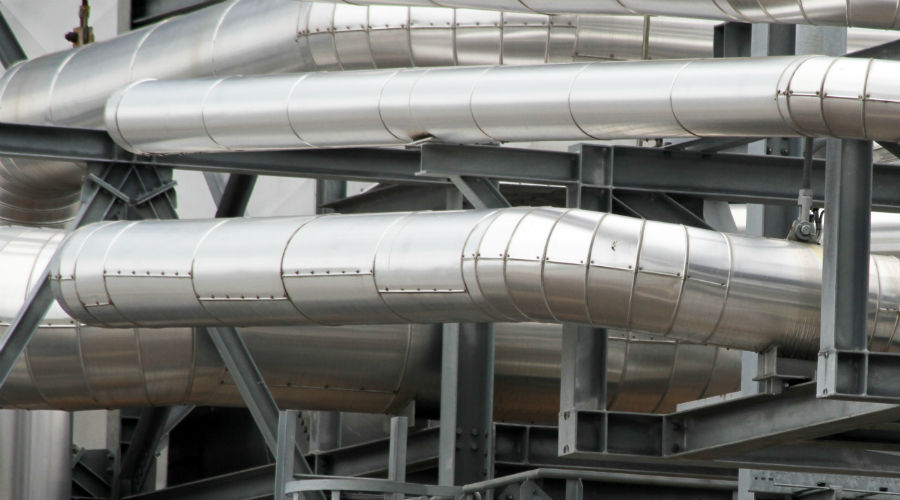The UK’s Industrial Strategy is billed as a new relationship between business and government – a 10-year plan in which government charts a strategic course that allows business to make long-term decisions and focus on creating wealth and prosperity. The government’s ambition is for this partnership to significantly increase business investment by 2035. The Industrial Strategy has been developed in collaboration with industry: there was a consultation which ran from October to November 2024 and a Technical Annex details the analysis that was carried out – worth a quick look through this.
8 priority sectors
The Industrial Strategy backs 8 sectors (the IS-8) that the government believes have the highest potential to raise national levels of investment and productivity, spread prosperity to all parts of the country, make us all more secure, and seize the opportunities of net zero. It targets the places and clusters across the UK that support those sectors. The sectors are:
Each sector has its own Sector Plan and we have included links to the ones that have been published so far.
Reducing electricity costs, accelerating grid connections and promoting industrial decarbonisation
It is interesting that the first action mentioned in the Industrial Strategy is “reducing electricity costs, accelerating grid connections and promoting industrial decarbonisation”. This is a government that is serious about the net zero 2050 commitment: “There can be no plan for economic stability or sustainable growth that does not include a credible plan for net zero.”
Electricity costs will be reduced by a new British Industrial Competitiveness Scheme to be introduced from 2027. The scheme will benefit manufacturing electricity intensive frontier industries in the IS-8, such as automotive and aerospace, and foundational manufacturing industries in the supply chains, such as chemicals. Eligible businesses will be exempt from paying the costs of the Renewables Obligation, Feed-in Tariffs and the Capacity Market, which should bring GB electricity costs more in line with other major economies in Europe. A consultation on this will open shortly.
There will also be an uplift of the Network Charging Compensation (NCC) scheme from 60% to 90% and continued support for the Energy-Intensive Industries Compensation Scheme.
These measures will be funded by “bearing down on levies and other costs in the energy system”. We are yet to see what is meant by this. The Government also intends to use additional funds from the strengthening of UK carbon pricing, including as a result of linking with the EU carbon market.
The government is designing a new ‘Connections Accelerator Service’ that will provide support for projects connecting to the grid, including prioritising those that create high-quality jobs and bring the greatest economic value. It is expected to begin operating at the end of 2025.
New powers in the Planning and Infrastructure Bill, currently before Parliament, include a power to ‘designate’ government strategic documents, including this Industrial Strategy, to inform allocation of connections, enabling the Government to reserve future capacity on the grid, dramatically reducing waiting times for businesses with major investments in GB.
There is also a technical consultation on growing the market for low carbon industrial products, including steel, cement and concrete. This should allow buyers (including public bodies) to choose ‘greener’ products, ultimately leading to reduced greenhouse gas emissions.
Supply chain
The Industrial Strategy doesn’t just look at the key growth industries. It looks at the supply chain that underpins them: the “foundational industries” such as electricity networks, ports, construction, steel, critical minerals, composites, materials, and chemicals. A new Supply Chain Centre will carry out deeper analysis and report back by the end of 2025. The findings will be used to review priorities for the Government’s Public Financial Institutions and sector grant funds for these industries.
Using public finance to crowd in private investment
There is a whole chapter of the Industrial Strategy devoted to creating an enduring partnership with business. The Government will take every appropriate opportunity to combine public and private funding to attract private capital. It has given the National Wealth Fund (NWF) a new strategic steer to prioritise investments in clean energy industry sub-sectors, digital and technologies, advanced manufacturing, and transport, and to consider the role it can play in defence, life sciences, and creative industries.
There is a helpful diagram on page 52 of the Industrial Strategy showing a typical funding journey for innovative businesses and how the UK’s public financial institutions can support them. This ranges from investments by UKRI/Innovate UK to help commercialise a new technology, to NWF investments to help deploy capital at scale, and UK Export Finance to help grow exports once scaled up.
For clean energy projects in particular, Great British Energy (GBE) and the NWF will provide a strong end-to-end development and finance offer, playing distinct and complementary roles of developer and bank. The Government has already identified an initial £300 million for investment into domestic offshore wind supply chains through GBE, supporting the domestic manufacture of critical and innovative components. GBE and Great British Energy – Nuclear will invest more than £8.3 billion over this Parliament in homegrown clean power.
The Role of Place
The Industrial Strategy takes a different approach to previous Government strategies by underlining the importance of place. As the Technical Annex says, “Although the Industrial Strategy is focused on sectors, it must also consider the role of place – all economic activity occurs somewhere. Focusing on specific sectors implicitly means focusing on places, and vice versa.” The city regions in particular have the potential to add over £90 billion each year to the UK economy if their productivity is raised to national levels. Each of the sector plans sets out the most important city regions and clusters for that sector, with interventions to support them.
Turning now to the Clean Energy Industries Sector Plan, Energy Secretary Ed Milliband says in the Foreword, “With this Sector Plan we are targeting at least a doubling of current investment levels across our frontier Clean Energy Industries to over £30 billion per year by 2035.”
The Plan focuses on clean energy industries where the UK has the greatest growth potential. These are: Wind (Onshore, Offshore and Floating Offshore), Nuclear Fission, Fusion Energy, Carbon Capture Usage and Storage (CCUS) including Greenhouse Gas Removals (GGRs), Hydrogen, and Heat Pumps. Electricity networks also provide a number of foundational inputs to the growth driving sectors, including HVDC cables and transformers, acting as a cross-economy enabler of growth.
The Plan acknowledges that there are many other technologies which are also vital for the Clean Energy Superpower Mission but are not among these frontier industries. These include solar, bioenergy, storage including Long Duration Energy Storage, heat networks, and smart technologies. The government will continue to support the deployment of these technologies.
What’s actually new?
There’s not a lot that’s actually new in the Plan, but it is useful to have a more holistic view of the clean energy policies. Things that stood out to us are:
- The Government will respond to the CfD reforms consultation “in the summer”, confirming its position on:
- Relaxing CfD eligibility criteria for fixed-bottom offshore wind projects to permit projects that have not yet obtained planning consents to participate in near-term allocation rounds, awarding CfDs at an earlier stage in the development cycle.
- Evolving our approach to fixed-bottom offshore wind budgets to maximise the cost-effective volume of capacity that could be contracted from each round.
- Providing an auction schedule for upcoming allocation rounds, and signalling ambition to improve transparency and predictability of the CfD.
- There are (or will be) deployment commitments for each of the frontier industries, complemented by the Carbon Budget and Growth Delivery Plan, due by October 2025.
- 35% of the emission reductions needed for net zero depend on technologies under development – a sobering thought!
- The CfD Clean Industry Bonus might be expanded to hydrogen and onshore wind – look out for consultations.
- There will be a £4 billion British Business Bank Industrial Strategy Growth Capital scale-up and start-up financing package, funding new specialist investors who target high-potential companies from a pre-commercial stage with early private capital.
- An Onshore Wind Strategy to be published. It will set out over 40 actions to unlock onshore wind deployment, tackling key barriers such as planning, aviation and defence. Government is committed to deploying 27- 29GW of onshore wind by 2030 in GB, building on the over 16GW of onshore wind of current UK capacity.
Hydrogen
On hydrogen specifically, we can expect:
- The third Hydrogen Allocation Round (HAR3) by 2026 (with market engagement autumn 2025), and HAR4 from 2028, with a review of allocation rounds published later this year looking at ways to streamline the process.
- The first transport and storage allocation round in 2026, and there will be a new Hydrogen to Power business model in 2026.
- A revised Hydrogen Strategy will be published this year, including further details of the allocation process for the UK’s first regional hydrogen network for the production, storage and transportation of low carbon hydrogen to support its use in key sectors locally.
- As mentioned above, the Government may expand the Clean Industry Bonus to hydrogen.
- A consultation on blending hydrogen into the gas transmission network in summer 2025, to gather evidence to inform the case for blending.
Cities, nations and clusters
Government is also launching a live tool, the Clean Energy Map, that plots a range of active clean energy projects supported by Government since July 2024, to showcase the jobs and investment benefits of the Clean Energy Mission across the UK. The map will go live in July and can be viewed at https://clean-energy-map.energysecurity.gov.uk/







